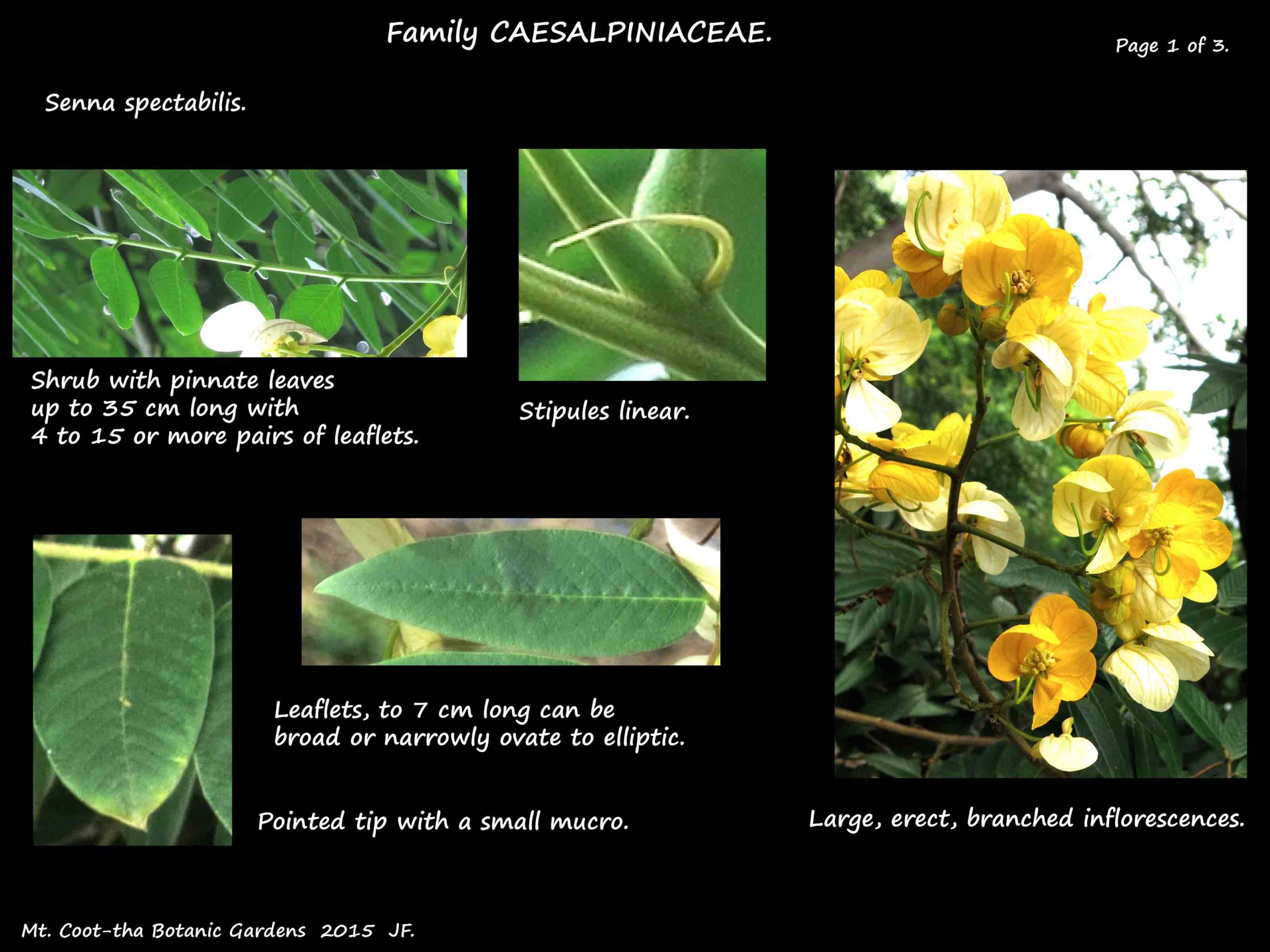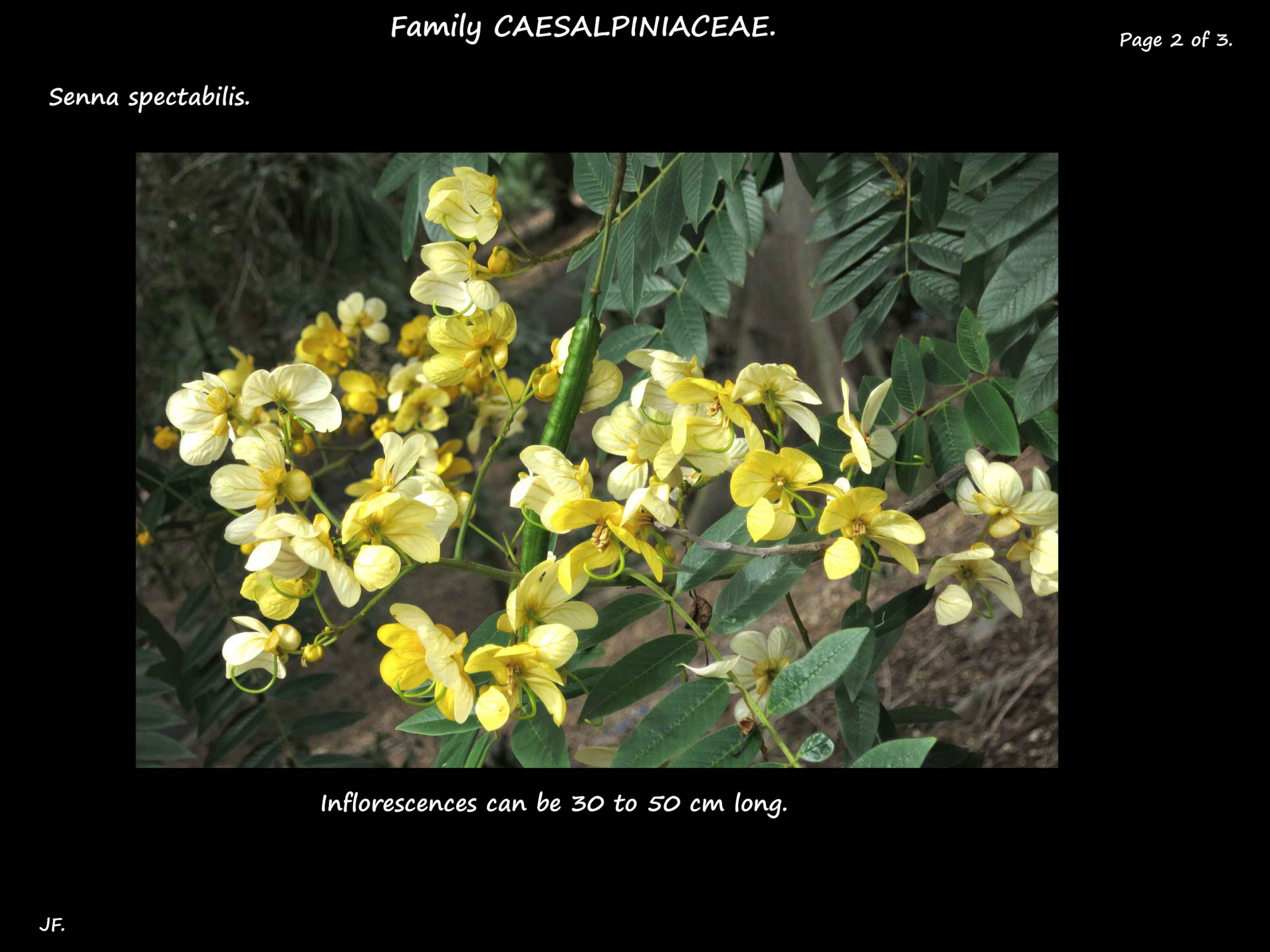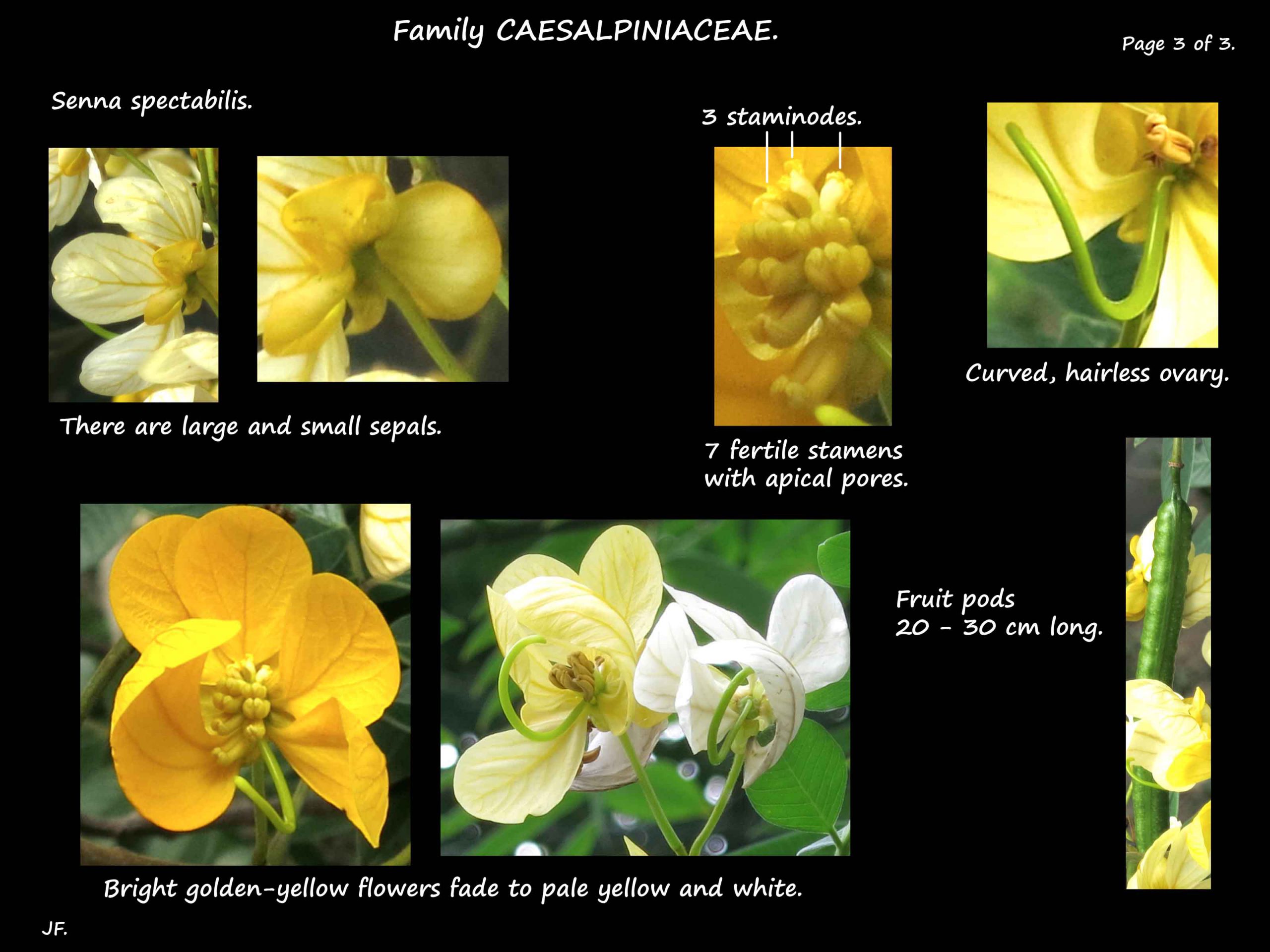Senna spectabilis.
Family Caesalpiniaceae.
Previously known as Cassia spectabilis it is native to South and Central America.
They have become naturalised in warmer areas around the world.
They were cultivated as ornamentals but are rapid growers and have become a weed.
They are large shrubs or small, deciduous trees up to 10 m high.
The main trunk forks low down resulting in multiple trunks.
It has a rounded, spreading crown with dense foliage.
The smooth, grey bark develops fissures, warts and lenticels as it gets older.
New growth has soft hairs.
The alternate, pinnate leaves are up to 35 cm long.
The linear stipules, 1 cm long, fall off early.
Leaves have 4 to 15 (19) pairs of narrowly elliptic leaflets.
Each leaflet, on a petiolule 3 to 4 mm long, can be up to 7 cm long and around 1.5 cm wide.
There is a small mucro on the pointed tip.
There may be a few hairs mainly on the lower surface.
There are no glands.
The large, erect, branched inflorescences are terminal or axillary.
Commonly around 15 to 30 cm long they can be up to 50 cm or more.
The bright yellow flowers have parts in 5’s.
The small, hairy bracts fall off early.
Flowers are on hairy stalks only 2 or 3 mm long.
The deep yellow to orange sepals are unequal with the larger ones about 6 mm long.
The outer pair are hairy and the inner 3 are smooth.
The obovate petals are of different sizes from 2 to 3.5 cm long.
There are 7 fertile stamens and 3 very short staminodes.
The fertile stamens, longer than the staminodes, are still only a few mms long.
The anthers open via an apical pore or slit.
The smooth, curved ovary has a small style and stigma.
The fruit are pods around 20 cm long but occasionally up to 30 cm.
There can be up to 70 flat, brown seeds, 0.5 cm across, each in its own cell.
Maturing to a dark brown or black the pods may split open on one side.
J.F.




